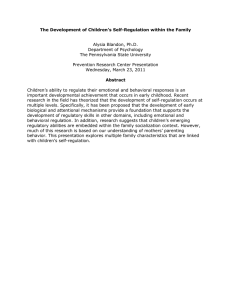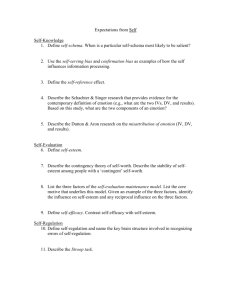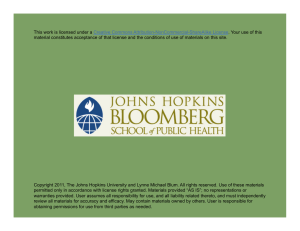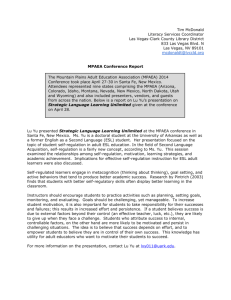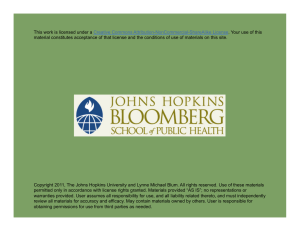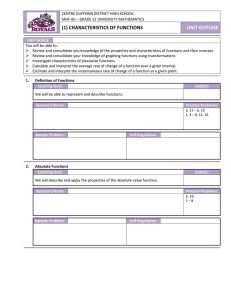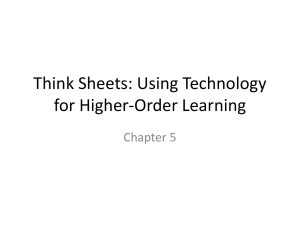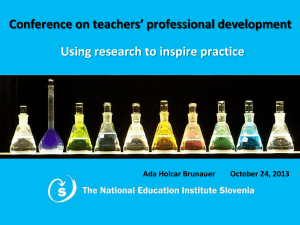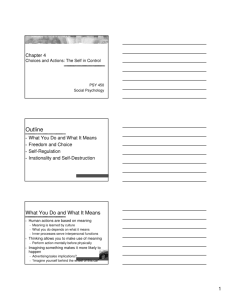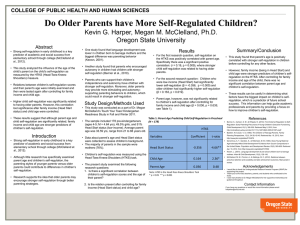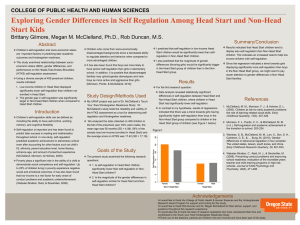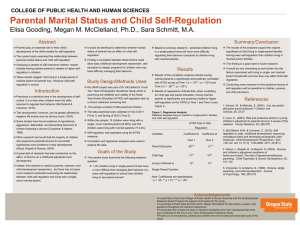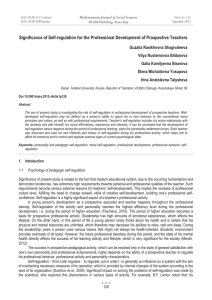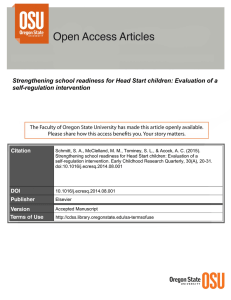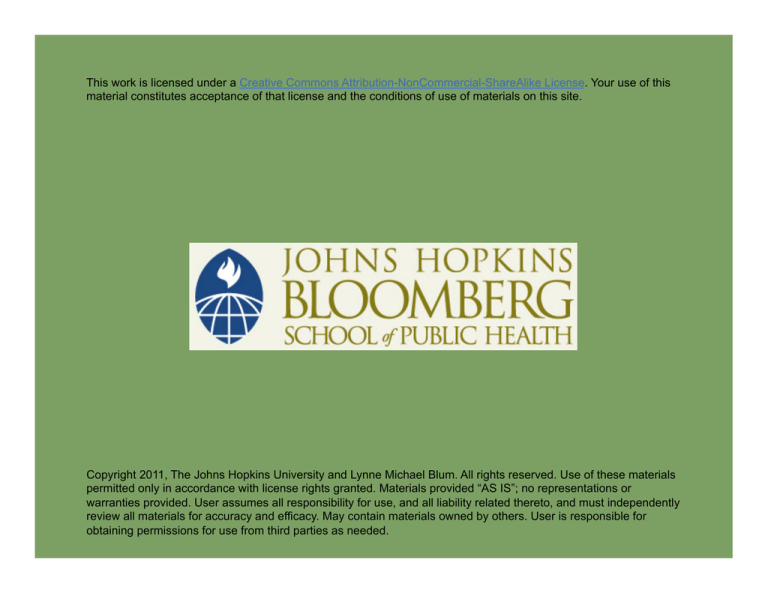
This work is licensed under a Creative Commons Attribution-NonCommercial-ShareAlike License. Your use of this
material constitutes acceptance of that license and the conditions of use of materials on this site.
Copyright 2011, The Johns Hopkins University and Lynne Michael Blum. All rights reserved. Use of these materials
permitted only in accordance with license rights granted. Materials provided “AS IS”; no representations or
warranties provided. User assumes all responsibility for use, and all liability related thereto, and must independently
review all materials for accuracy and efficacy. May contain materials owned by others. User is responsible for
obtaining permissions for use from third parties as needed.
Early Executive Functions: Self Regulation, Effort
Control, Impulse Control, and Attention
Lynne Michael Blum, MS, PhD
Johns Hopkins University
Section A
Executive Function
By the End of this Lecture You Will Be Able to:
Define and explain the significance of executive function (EF)
Understand EF tasks at each developmental stage
Understand EF and emotional, cognitive, and social growth
Understand the interaction between EF and attention control as
well as ADHD
Gain an overview of EF dysfunction
4
Define “Executive Function”
The brain-based steps we take to control our behavior and thoughts
to …
- Make decisions
- Solve problems
- Reach goals
- Master challenges
5
Commonly Defined as …
Initiate problem solving, shift between choices, inhibit, sustain
attention, plan, organize, strategize, self-monitor (Denkla, 1989
and 2001)
Self-regulation, flexibility, inhibiting nonproductive behaviors,
planning, and organizing steps toward a goal (Eslinger, 1996)
6
EF Is Hardwired—Frontal Lobe Is Command Central
Focus on the new data
React and regulate the reaction
Assert effortful control to stay on target
Take constructive action—scan, sort, organize, integrate into
memory
7
Think of the Significance
Instinct from our innate quest for mastery and self-competence
(White, 1959) and …
Quest for self-efficacy (Bandura, 1970)
Drive to master challenges in the face of adversity (Masten, 2003)
- Infants seek nurturance: food, rest, warmth
- Preschoolers seek self-care independence
- Children seek academic mastery
School mastery: EF is central factor of mastery (Blair and Razza,
2007)
8
Lifelong Trajectory
Weak executive function skills account for many
- In the criminal justice system
- People who are unable to keep jobs
Youth with disorders of conduct including violence and substance
abuse have a history of weak executive function skills as well as
other social/emotional stressors (Embry, 2002)
9
Culture Bound
Cultures differ on goal of self-regulation
Westerners value self-regulation to aim for autonomy
Many African and Asian cultures teach self-regulation to help with
the community
- Autonomy is viewed as anti-social or egocentric
10
Executive Functions
What are the executive functions, and how do they develop?
11
Cartoon
This image has been deleted because
JHSPH OpenCourseWare could not
secure permission for its use.
12
Executive Functions Follow a Path
Executive functions are on a growth continuum
A developmental course impacted by the child’s genetics,
temperament, and environment
A child acts out of
- Choice—temperament
- Brain development—cognitive stage
- Environmental training—role models
Source: Ayoub and Fischer. (2006).
13
Problem Solving
The foundation skills …
- Self-regulation
- Effortful control
… impact problem solving
14
Self-Regulation
Anterior cingulate gyrus, regulating
- Cognition
- Behavior
- Emotion
15
Environment and Self-Regulation
Continuous exposure to trauma
- Flooding of cortisol
Diminishes brain functioning
Diminishes self-regulatory capacity
- Results in poor self-control and decision making
16
Baby to Adult: Coping with Stressors
Self-soothing is the first self-control strategy
Self-soothing is a problem solving strategy
Stressor presents itself
- Baby reacts, self-soothes, and then calms down to deal with the
stressor
Skills persist as self-calming skills throughout life
17
Self-Regulation Development
Infant:
- Learns self-regulation to calm self
Toddler:
- Learns effortful control to conform to others’ demands while
pushing to meet own needs
- Begin to learn impulse control of thought, behavior, and
emotion
Childhood and adolescents:
- Refine impulse control
- Learn “stop and think”
- Learn to delay reacting until all information is gathered to meet
goal
18
Attention and Focus—The Next Step
Infant: orienting and focus; observe
Toddler: focus for minutes, but distractible
Preschoolers: sustain attention one to one and resist conflicting
stimuli
Children: sustain attention while in a group on single stimuli
Teens: sustain attention not only in a group but also with multiple
conflicting stimuli
19
Problem Solving
Infants engage others: the social smile and social referencing
Toddlers active problem solvers, trial by error
Children learn how to strategize with a few options, with simple
shifting between ideas to choose the relevant information to solve
the problems
Teens use logical reasoning and hypothesis testing; use memory
while strategizing; learn sophisticated sorting and shifting among
data; find the best options to reach the goal
20

